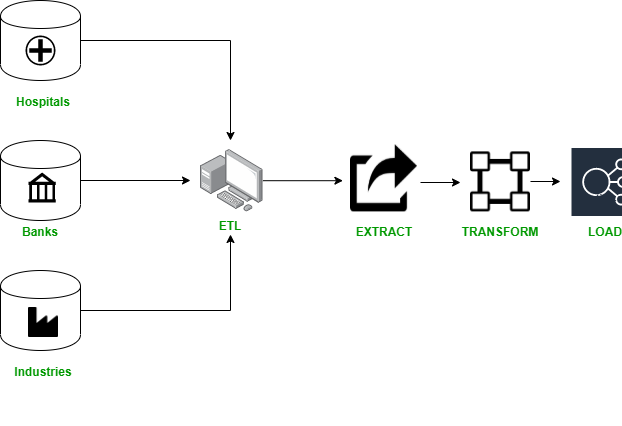
Data warehousing and data mining are closely related processes that are used to extract valuable insights from large amounts of data. The data warehouse process is a multi-step process that involves the following steps:
The data warehouse process is an iterative process that is repeated as new data is added to the warehouse. It is a crucial step for data mining process, as it allows for the storage, management and organization of large amount of data which is needed to be mined. Data mining process can be applied to the data in the data warehouse to uncover hidden patterns, relationships, and insights that can be used to make informed business decisions.
Data Warehouses are information gathered from multiple sources and saved under a schema that is living on the identical site. It is made with the aid of diverse techniques, inclusive of the following processes:
1. Data Cleanup: Data cleaning is the way of preparing statistics for analysis with the help of getting rid of or enhancing incorrect, incomplete, irrelevant, duplicate, or irregularly formatted information. This fact is no longer necessary or beneficial if you want to research the statistics because it is able to interrupt the technique or supply false results.
2. Data Integration: Data integration is the process of integrating data from different assets into a unified view. The integration method starts with a startup and includes steps that include refinement, ETL mapping, and conversion. Data integration ultimately permits analytics tools to create powerful and cheap enterprise intelligence. In a typical data integration procedure, the client sends a request for information to the master server. The master server prepares the vital records for internal and external assets. Extracts facts from sources and then integrates them into a single information set. It is then returned to the client for use.
3. Data Transformation: The process of converting information from one layout or shape to another is referred to as data transformation. Data transformation is critical for features that include data integration and information management. Data transformation has several capabilities: you can change the record types based on the needs of your project; enrich or aggregate the records by removing invalid or duplicate data. Generally, the technique consists of two stages.
In the first step, you should:
In the second step, you must:
4. Loading Data: Data loading is the process of copying and loading data from a report, folder, or application to a database or similar utility. This is usually done via copying digital data from the source and pasting or loading the records into a data warehouse or processing tool. Data-loading is used in data extraction and loading methods. Typically, such information is loaded in a different format than the original location of the source.
5. Data Refreshing: In this process, the data stored in the warehouse is periodically refreshed so that it maintains its integrity. A data warehouse is a model of multidimensional data structures that are known as “Data Cubes” in which every dimension represents an attribute or different set of attributes in the schema of the data and each cell is used to store the value. Data is gathered from various sources such as hospitals, banks, organizations, and many more and goes through a process called ETL (Extract, Transform, Load).

This process can be seen in the illustration below:
Data quality: Ensuring data quality in a data warehouse is a major challenge. The data coming from various sources may have inconsistencies, duplications, and inaccuracies, which can affect the overall quality of the data in the warehouse.
Data integration: Integrating data from various sources into a data warehouse can be challenging, especially when dealing with data that is structured differently or has different formats.
Data consistency: Maintaining data consistency across various data sources and over time is a challenge. Changes in the source systems can affect the consistency of the data in the warehouse.
Data governance: Managing the access, use, and security of the data in the warehouse is another challenge. Ensuring compliance with legal and regulatory requirements can also be challenging.
Performance: Ensuring that the data warehouse performs efficiently and delivers fast query response times can be a challenge, particularly as the volume of data increases over time.
Data modeling: Designing an effective data model that reflects the needs of the organization and optimizes query performance can be a challenge.
Data security: Ensuring the security of the data in the warehouse is a critical challenge, particularly as the data warehouse contains sensitive information.
Resource allocation: Building and maintaining a data warehouse requires significant resources, including skilled personnel, hardware, and software, which can be a challenge to allocate and manage effectively.
Overall, data warehousing and data mining can be powerful tools for organizations that need to extract insights from large amounts of data. However, they also come with their own set of challenges and limitations, and organizations need to carefully consider the costs and benefits before implementing them.
Features of Data Warehouse: Please refer – Features of Data Warehouse.